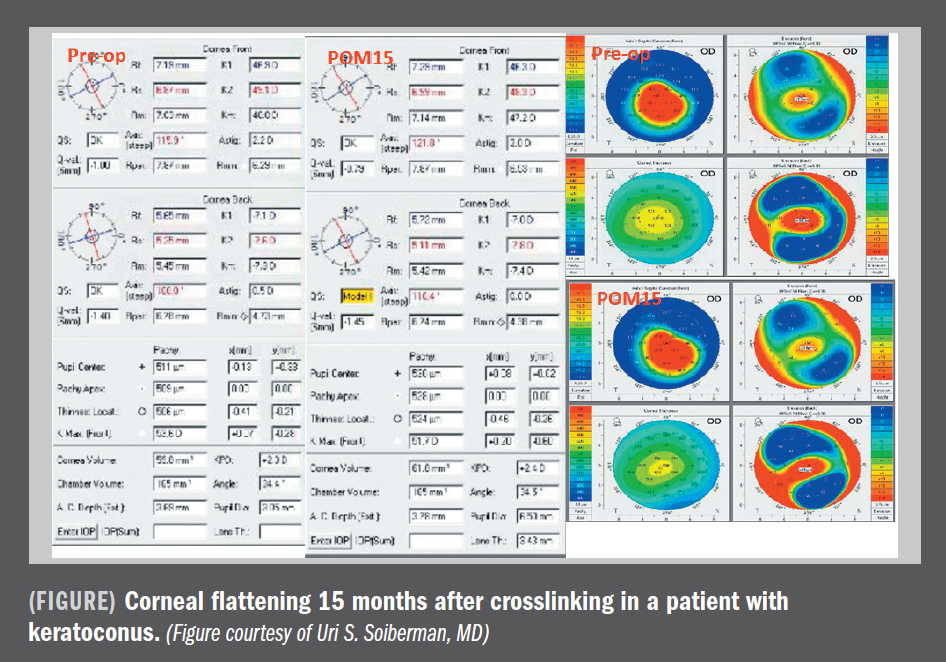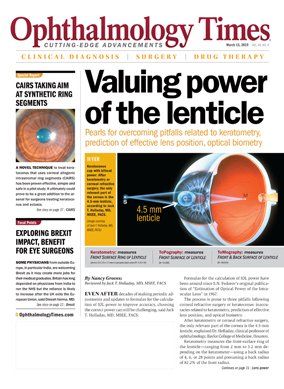Publication
Article
Digital Edition
2019: State of corneal crosslinking for patients with keratoconus
Author(s):
Stabilization, improvement in corneal curvature measurements seen in many treated cases

Reviewed by Uri S. Soiberman, MD
Keratoconous-a common, gradually progressive corneal ectasia in which a loss of structural integrity leads to a bulging, cone-shaped cornea-is not uncommon, with incidence rates reported up to 265 per 100,000.
Based on the results of the U.S. Multicenter Clinical Trial of Corneal Collagen Crosslinking for Keratoconus Treatment, the original Dresden protocol entailing epithelial removal followed by application of riboflavin and use of full-fluence UV-A irradiation received FDA approval in 2016 for use in progressive keratoconus and in post-refractive ectasia as well. It’s also used off-label for infectious keratitis.
Unfortunately, disease onset tends to be in early adolescence, and these younger patients are at risk for rapid progression and a lifelong visual disability, noted Uri S. Soiberman, MD, assistant professor of ophthalmology, Wilmer Eye Institute, Johns Hopkins University School of Medicine, Baltimore.
At the institute, eligible patients have been treated with CXL protocol with great success. Eligibility criteria included 1 D or more of progression in corneal curvature per year, minimal corneal thickness of 400 μm, and best spectacle-corrected visual acuity of 20/25 or worse.
“Our results at Wilmer are consistent with those of the larger randomized, controlled U.S. trial,” he said. “We see either stabilization or improvement in corneal curvature measurements in most of our treated patients. Treating very rapidly progressive disease remains a challenge, as well as very advanced disease. Early detection is of utmost importance in keratoconus.”
Unfortunately, epi-off CXL is not appropriate for all keratoconus patients.
Patients with very advanced disease and thin corneas will not benefit from the treatment. New approaches are being developed, such as customized treatments, and novel epi-on (transepithelial) procedures.
Disclosures:
Uri S. Soiberman, MD
E: usoiber1@jhmi.edu
This article was adapted from Dr. Soiberman’s presentation at the 2018 Johns Hopkins Wilmer Eye Institute’s Current Concepts in Ophthalmology meeting in Baltimore. Dr. Soiberman has no financial interests to disclose.

Newsletter
Don’t miss out—get Ophthalmology Times updates on the latest clinical advancements and expert interviews, straight to your inbox.





